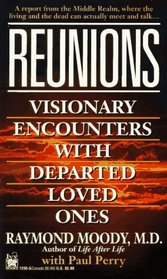Helpful Score: 1
From Library Journal
Moody ( Life After Life , Mockingbird Bks., 1981) continues his pioneering studies on death and the afterlife in this fascinating book, making a cogent and persuasive argument for the ability to contact the deceased. Moody describes his experiments with the ancient technique of mirror gazing to induce visions of the dead. Many of the 300 subjects with whom he has experimented had surprisingly real encounters with deceased friends and loved ones while using this technique. Moody seeks to elevate the use of mirror gazing to a respectable level and demonstrates its potential as a therapeutic tool to heal grief and promote self-discovery. He challenges the mind-set of traditional psychologists and doctors and shows the need for open-mindedness in studying the realms of consciousness. This well-written book is likely to be controversial but is sure to be popular in public libraries.
- Elizabeth Salt, Otterbein Coll. Lib., Westerville, Ohio
Copyright 1993 Reed Business Information, Inc.
Moody ( Life After Life , Mockingbird Bks., 1981) continues his pioneering studies on death and the afterlife in this fascinating book, making a cogent and persuasive argument for the ability to contact the deceased. Moody describes his experiments with the ancient technique of mirror gazing to induce visions of the dead. Many of the 300 subjects with whom he has experimented had surprisingly real encounters with deceased friends and loved ones while using this technique. Moody seeks to elevate the use of mirror gazing to a respectable level and demonstrates its potential as a therapeutic tool to heal grief and promote self-discovery. He challenges the mind-set of traditional psychologists and doctors and shows the need for open-mindedness in studying the realms of consciousness. This well-written book is likely to be controversial but is sure to be popular in public libraries.
- Elizabeth Salt, Otterbein Coll. Lib., Westerville, Ohio
Copyright 1993 Reed Business Information, Inc.




